With their colorful plumage, long, stilt-like legs, slender body and unique bill, flamingos always captivate anyone who sees them. Discover fascinating facts about these majestic birds, including their various species, habitats, and ways to help protect them.
Are flamingos social animals? Yes, they are. They live in groups and forage and nest together. A group of flamingos is called a flamboyance or colony.
A welcome note from Miguel
Miguel Santos is a Zoological Manager who oversees the Tropical Bird team at SeaWorld Abu Dhabi. Miguel has been a driving force in the zoological field since 2003, leaving his mark across facilities in Portugal, USA, Italy, Mexico, Philippines, and the UAE. Miguel's expertise is certified by IATCB(International Animal Trainer Certification Board) as a CPBT-KA. He remains dedicated to advancing avian welfare as part of the Zoological team at SeaWorld Yas Island Abu Dhabi.
Where do flamingos live?
Flamingos usually live in large alkaline or saline lakes. They can also be seen in estuaries, particularly in lagoons. Their other preferred habitats include mangrove swamps, tidal flats, and intertidal zones.
The presence or absence of food sources also influences their choice of habitat.
Why do flamingos migrate?
Flamingos are considered non-migratory birds. However, they can have difficulty finding food or breeding in cold or frozen lakes, so they need to go somewhere with warmer temperatures and water.
Changes in the water level of their habitats also cause them to migrate. When the lake dries up or overflows, flamingos need to find another place where the water is high enough for them to wade, feed and breed in.
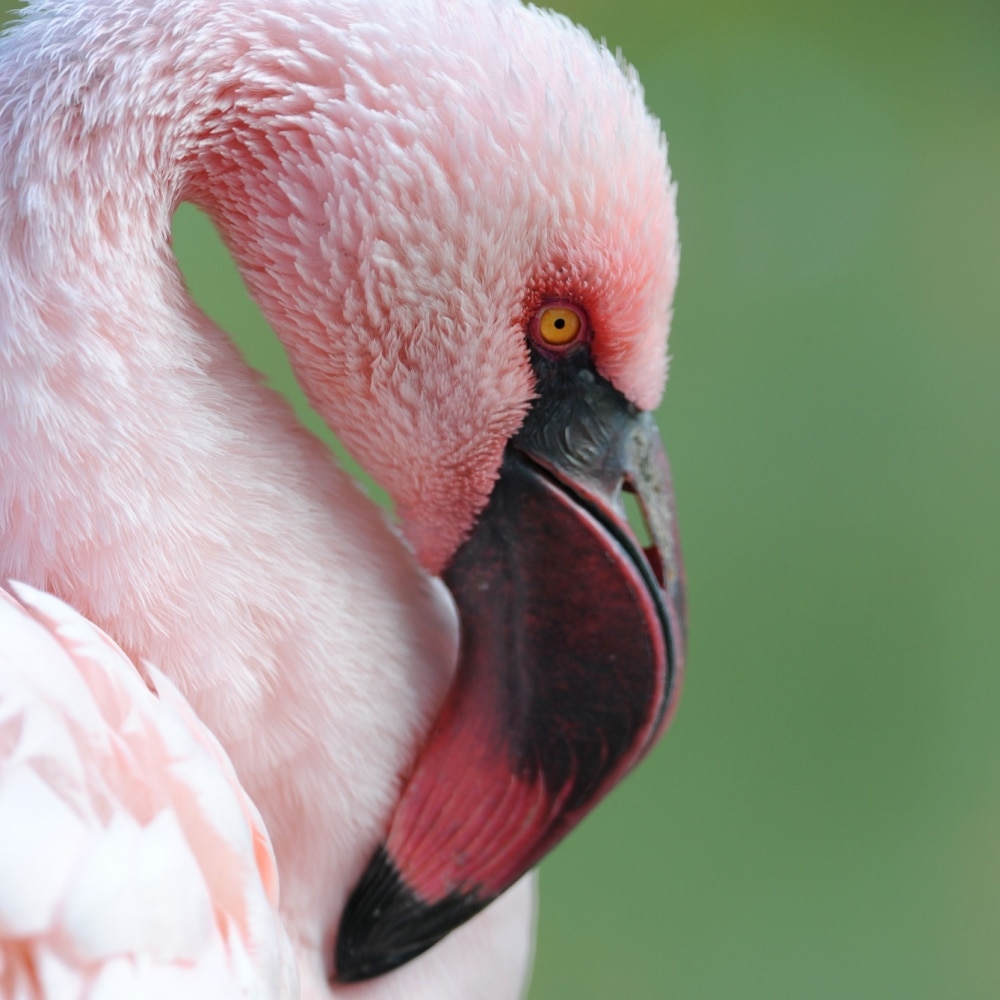

Scientific facts about flamingos
Below are some must-know facts about the scientific classification of flamingos:
Class: Aves
Order: Phoenicopteriformes
Family: Phoenicopteridae
There are six species or types of flamingos, which are:
- American or Caribbean flamingo : Phoenicopterus ruber Caribbean, southern Florida, coastal Colombia, northern Brazil, Venezuela, Belize, and the Galápagos Islands
- Andean flamingo : Phoenicoparrus andinus Peru, Chile, Bolivia, and Argentina
- Chilean flamingo : Phoenicopterus chilensis South America
- Greater flamingo : Phoenicopterus roseus Africa, Southern Europe, and South and Southwestern Asia
- James’s or Puna flamingo : Phoenicoparrus jamesi Peru, Chile, Bolivia and Argentina
- Lesser flamingo : Phoeniconaias minor Africa and Northwestern India
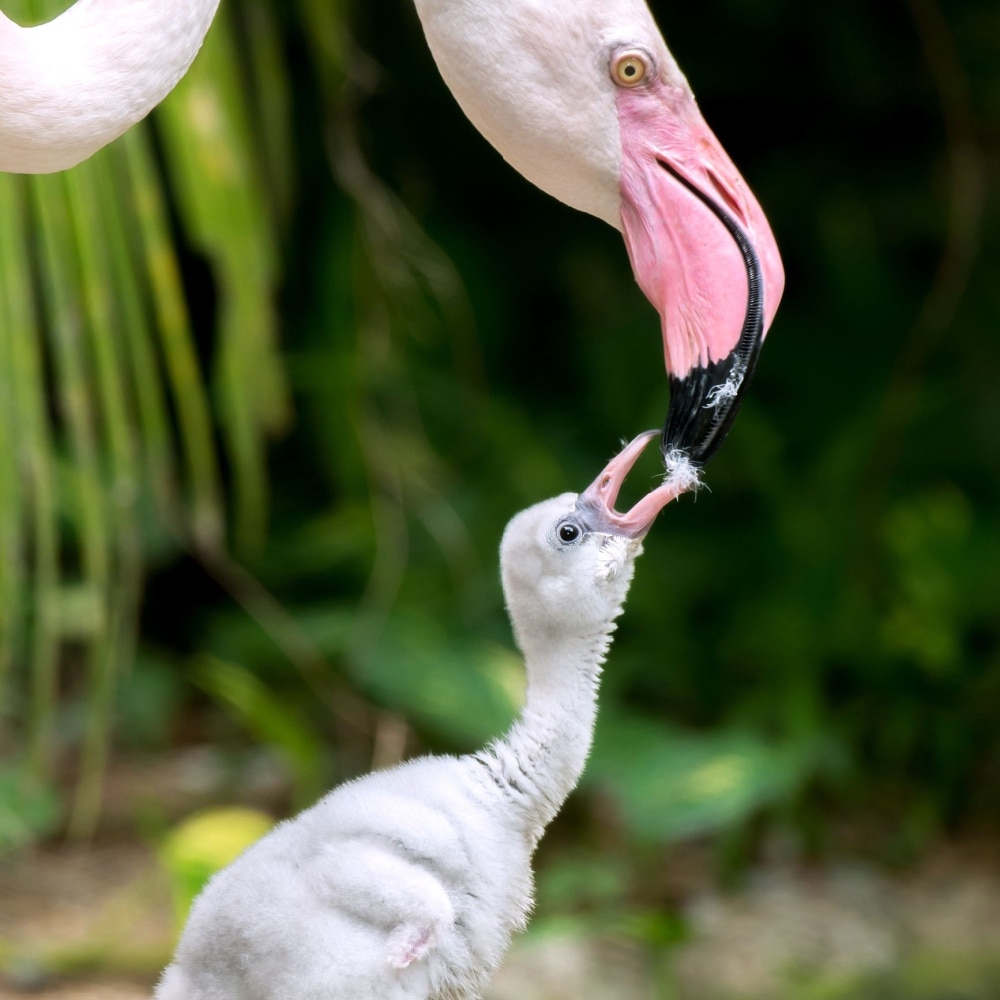

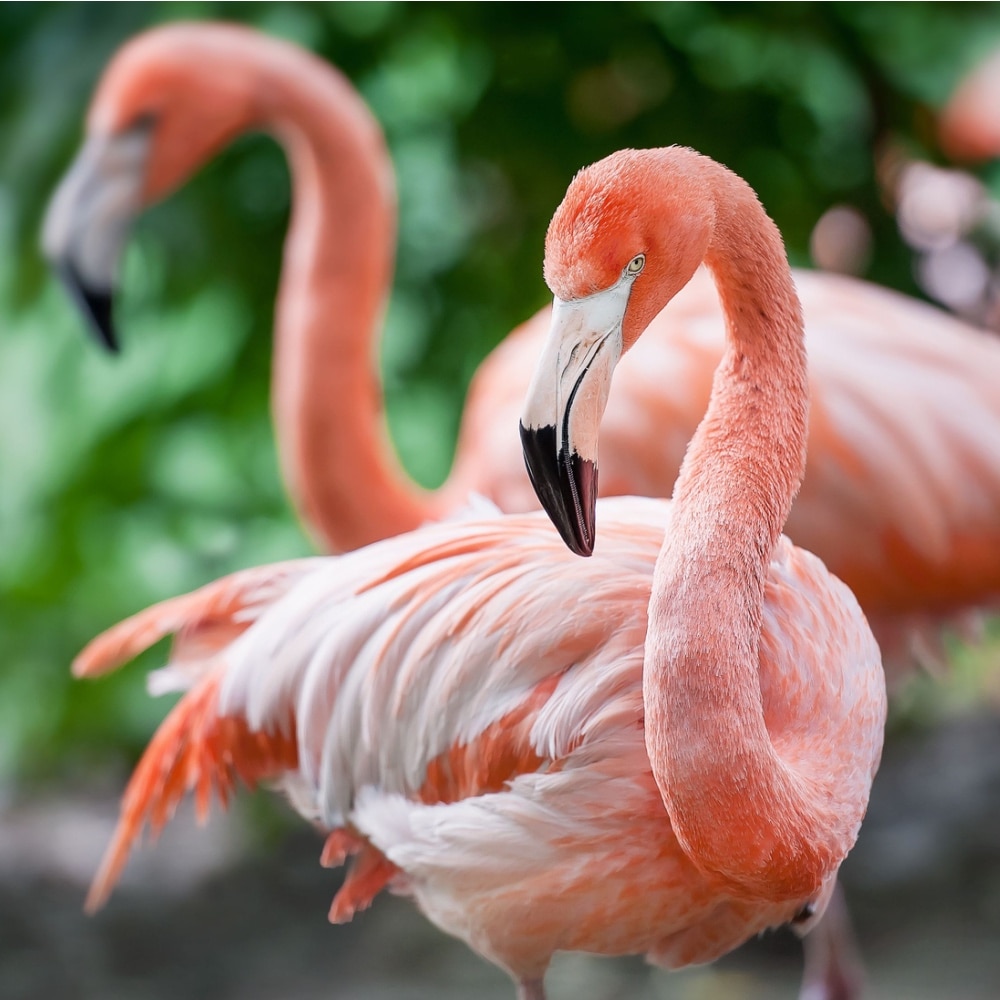
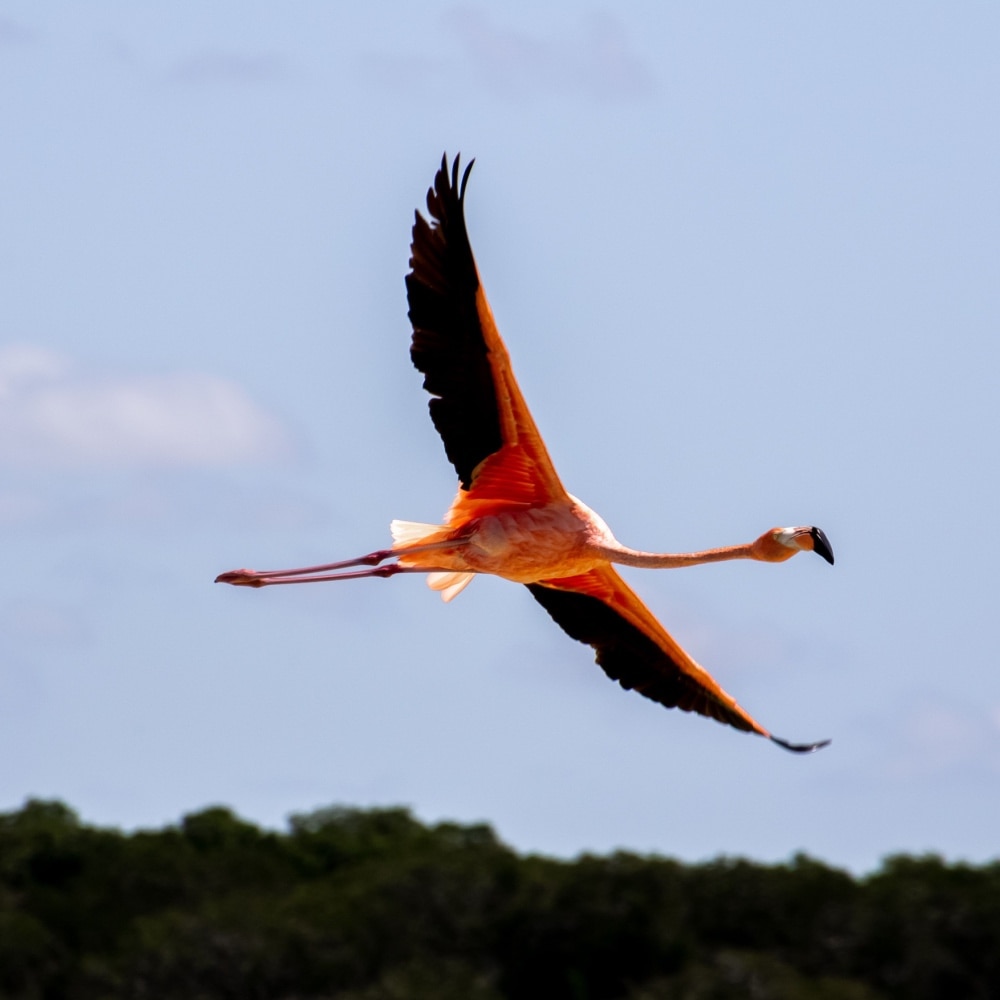
How do flamingos eat?
Aside from algae and brine shrimp, flamingos eat small seeds, other small crustaceans, animals and plants in shallow waters. Because of this, they filter feed.
Flamingos place their head upside down in the water with their bent bill pointed at their feet. They then move their head side-to-side, using their tongue to pump water in and out of their beak.
Their bills have comb-like plates along the edge that trap food inside while allowing water to escape.
Flamingo characteristics
Below are some unique physical characteristics of flamingos:
How big can flamingos get?
The tallest flamingo is the greater flamingo, which has a height of 1.2 to 1.4 meters and can weigh up to 3.5 kilograms. The smallest species is the lesser flamingo, with a height of 0.8 meters and a maximum weight of 2.5 kilograms.
The wingspan of flamingos ranges from 94 centimeters to 150 centimeters. The males are slightly bigger than the females.
How long do flamingos live?
Flamingos are thought to have one of the longest lifespans in the avian world, since some birds of this species are said to have reached 70 years. However, experts have not yet determined how long flamingos live on average.
Can flamingos fly?
Although you may often see flamingos in water, they love flying. They can fly long distances at high altitudes, day or night. Young birds can start flying from two to three months.
Why do flamingos stand on one leg?
These majestic birds stand on one leg to reduce their muscle fatigue. They can lock their ligaments and tendons in position, helping them maintain their balance longer when sleeping or resting. They can reduce the effort they put into this when they stand only on one leg.
Flamingo adaptations
Flamingos are well-adapted to the environment in which they live. They have developed these essential qualities:
Thermoregulation
Aside from enabling flamingos to maintain their stability and energy, standing on one leg, which involves curling the other one under their body, helps facilitate thermoregulation by keeping the foot warm and conserving body heat.
Respiration
Flamingos breathe through their lungs and hold their breath when they are underwater filter-feeding.
Wading and swimming
The long legs of flamingos allow them to wade into deeper water than other birds. They swim on the surface while eating if the water is too deep. Their webbed feet allow them to swim and support them on soft mud.
Adapting to hypersaline and hot environments
Since flamingos change their habitats frequently and often stay in high-saline environments, they’ve developed the ability to drink saltwater. They excrete the excess salt through their salt glands.
These birds can also drink extremely hot water.
Top facts about flamingos
Below are some additional interesting facts worth knowing about one of nature’s most colorful birds:
- Flamingos are good at building nests. They use stone, mud, feathers and other materials they find to build a nest near water where they can lay and protect their egg.
- Flamingos dance to attract mates: Males and females dance in groups and use elaborate movements as part of their courtship ritual.
- They are seasonal monogamists, meaning they stay with their mate for only one season. However, some flamingos have been observed to be with the same partner for several years.
Are flamingos endangered?
Flamingos are not yet on the endangered species list. However, the Chilean, lesser and James’s species are near threatened and the Andean flamingo is already considered vulnerable.
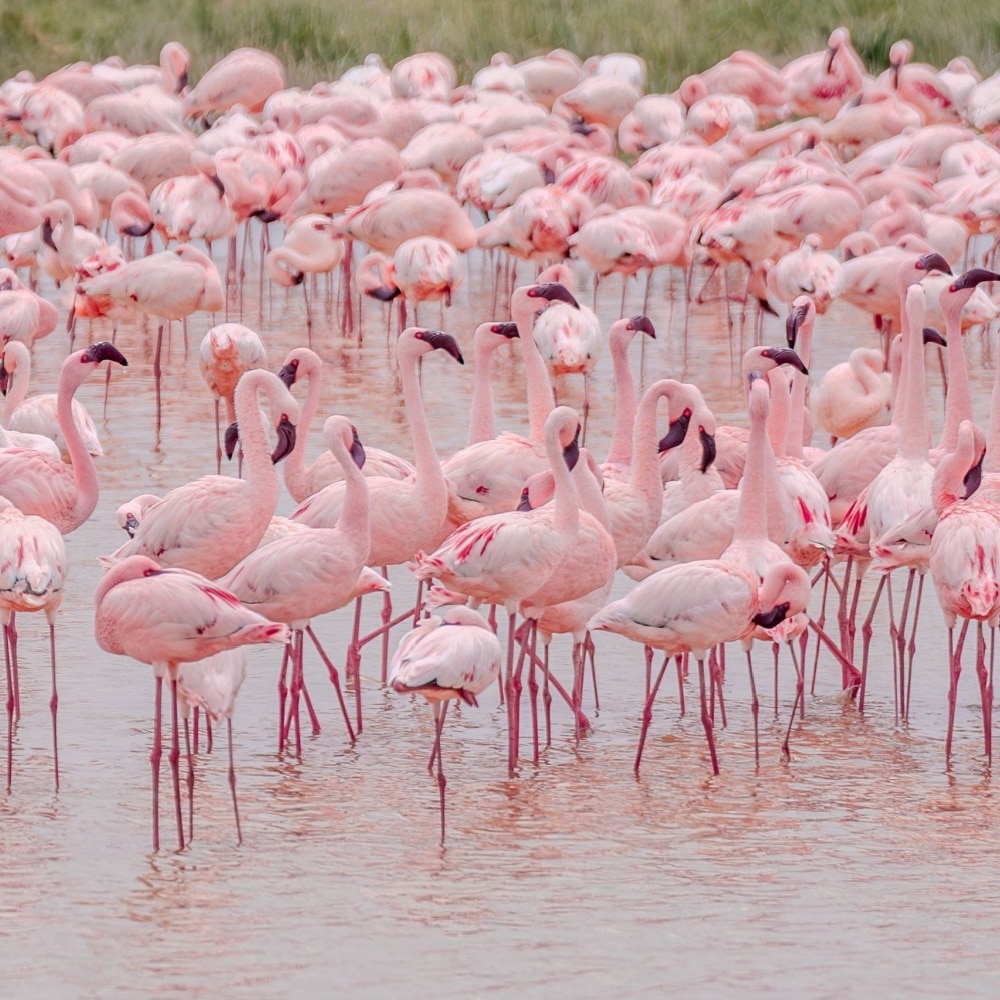
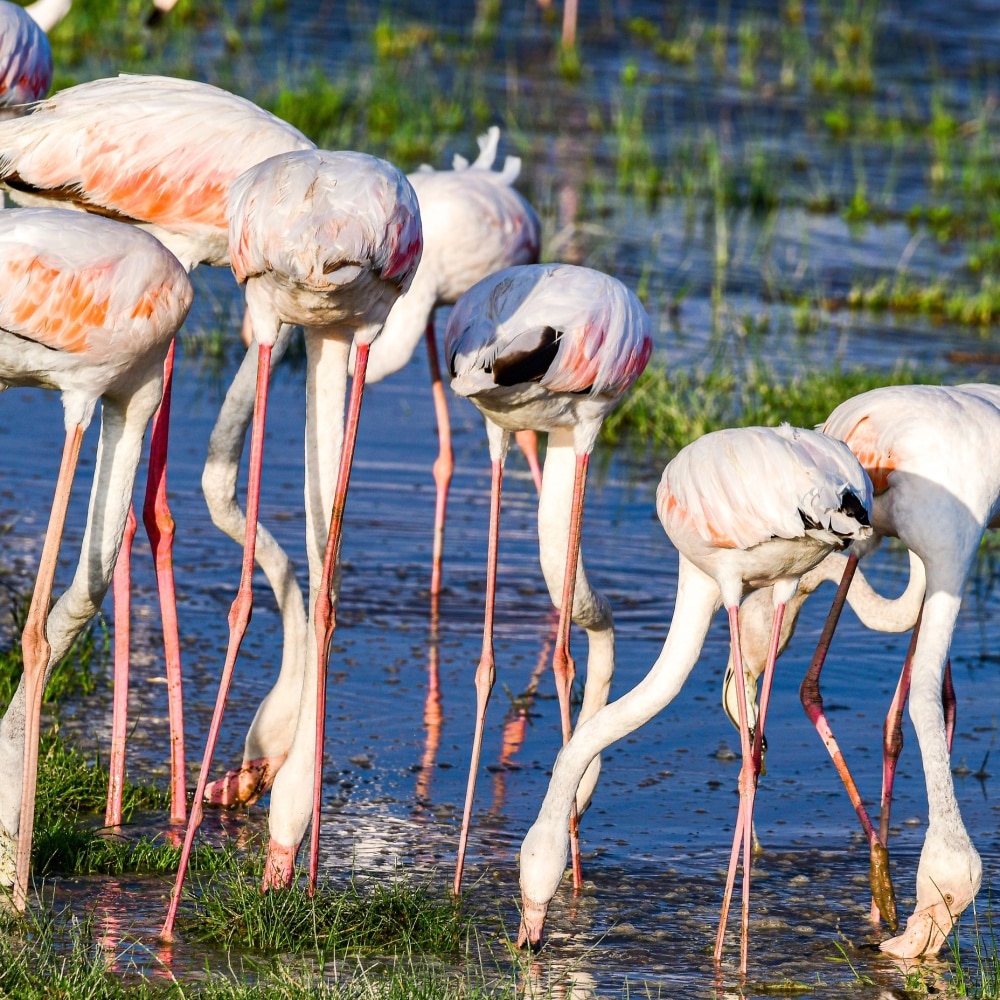
Flamingo conservation efforts
Organizations and individuals around the world are protecting flamingos in many ways:
- Raising awareness about flamingo conservation through education and advocacy.
- Protecting wetlands to ensure flamingos continue to have safe and bird-friendly habitats.
- Reducing pollution and plastic waste, especially in coastal areas where flamingos reside, to prevent habitat degradation and ensure they have access to clean water and food sources.
Marvel at flamingos at SeaWorld Yas Island, Abu Dhabi
Get the chance to see vibrant pink flamingos at one of SeaWorld Yas Island, Abu Dhabi’s realms, Tropical Ocean.
Tropical Ocean SeaWorld Abu Dhabi is home to Flamingo Point. This area has been specially designed to simulate a safe, suitable habitat for the magnificent Caribbean pink birds where they can behave and thrive naturally.
Did you like this story?
If yes, sign up for our newsletter and be among the first to know when we release a new story.



